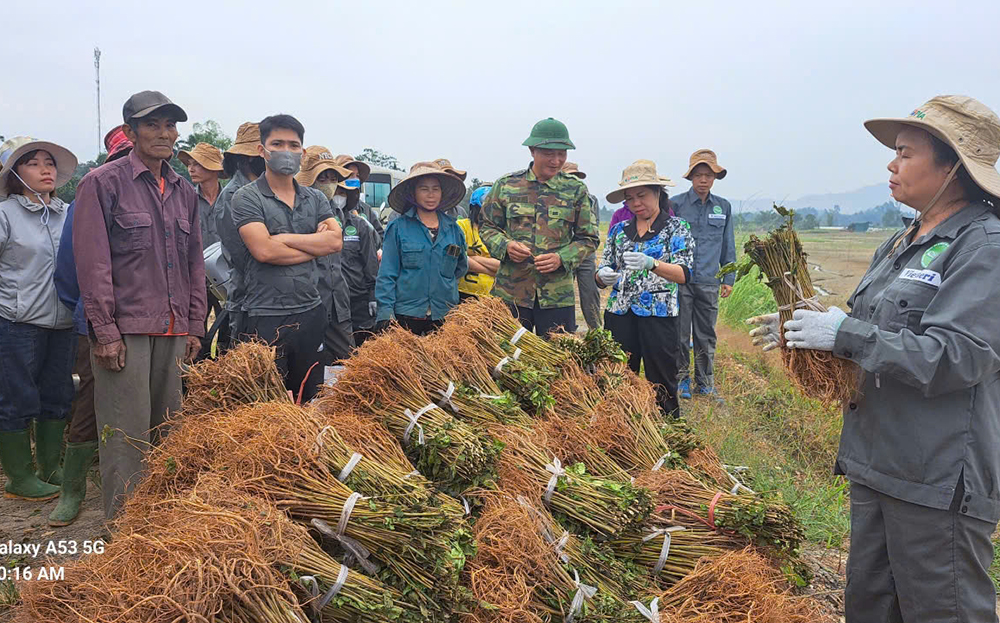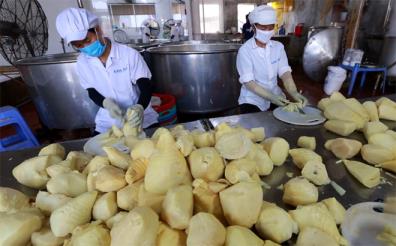Challenges still loom large, but local farmers have managed to harvest the last batches of silkworms of the season. They now have fresh vegetables to eat and sell, and in a few months, they will have corn and beans. The local authorities’ commitment to quickly restoring production, especially agricultural production, was not only timely and accurate but has also resonated deeply with the people of Tran Yen.
In addition to the severe losses in lives, homes, infrastructure, and property of the state, businesses, and residents, all 21 communes and towns in Tran Yen district suffered agricultural and aquacultural production damage, impacting 13,664 households. The estimated financial losses exceed 400 billion VND, affecting the income and livelihoods of thousands of residents.
Immediately after the floodwaters receded, Tran Yen’s Agricultural Development Support Center collaborated with the district’s Department of Agriculture and Rural Development to formulate strategies, providing guidance and mobilizing local farmers to restore production activities.
For mulberry fields, technical teams are actively guiding farmers in clearing drainage ditches, pruning leaves, and trimming tops. Cleanup of fields and irrigation canals, preparation of high-lying fields for corn, and planting of seasonal vegetables across usable land have also been prioritized. In addition, authorities are instructing farmers on disinfecting barns, burying deceased livestock, controlling disease spread, and caring for animals like chickens, pigs, buffaloes, and cattle to safeguard agricultural health and sustainability in the aftermath of the disaster.
Public outreach in Tran Yen has intensified across multiple channels—through loudspeakers, the Internet, Zalo groups, and Facebook—to support agricultural recovery efforts. Particularly effective are the on-field training sessions led by local agricultural technicians and experts from prominent research institutions such as the Mulberry and Silkworm Research Institute and the Development Research Institute under Binh Dien Fertilizer Corporation. These sessions have showcased numerous innovative approaches, including utilizing social media not only for guidance but also to highlight high-performing areas and gently remind those needing improvement. Additionally, charity events have been strategically combined with technical farming workshops to maximize their impact.
Government support and resources from organizations and individuals, coordinated by the Fatherland Front and various district agencies, have been rapidly distributed. Notable assistance includes thousands of liters of disinfectant supplied to communities before floodwaters fully receded, and prompt delivery of 10,000 kg of corn seeds, diverse vegetable seeds, fertilizers, and large quantities of poultry, animal feed, and livestock breeds. This timely aid has directly benefited local farmers, helping them rebuild their agricultural foundations amidst challenging conditions.
Timely policies and resources, decisive leadership from district authorities, and dedicated efforts by agricultural technicians have all contributed to Tran Yen’s post-flood agricultural recovery. Local farmers, especially members of socio-political organizations, have demonstrated resilience in facing adversity, enabling the rejuvenation of Tran Yen’s farmland.
As of now, 493 out of 593.3 hectares of affected mulberry fields have been restored, while 45 out of 100 hectares that were destroyed or buried have already been replanted since early October. By October 20th, Tran Yen district had planted over 500 hectares of winter corn and more than 600 hectares of other vegetables.
Fields that were submerged just weeks ago are now vibrant with green crops; corn plants have grown above knee height, and fresh produce like sweet mustard greens and bok choy harvested from newly revitalized fields is now sold at local markets. Livestock pens, too, are alive once more with the sounds of chickens and pigs. "While agricultural production in Tran Yen remains challenging, it has seen a robust recovery post-flood," affirmed Tran Anh Tuan, Secretary of the Tran Yen District Party Committee.
Le Phien








